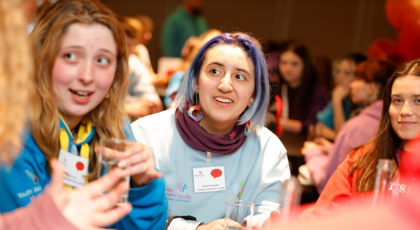A Child’s Experience of Being Listened to by a Vet
This story is narrated by an 11-year old girl
One Wednesday evening my Dad was out walking my dog. I was at my friend’s house. She only lives a few doors down. My mum came to the door and said something bad happened and she told me my dog Milo got knocked down by a car. I came home and Milo was on the floor he had a big bump on his head and his back legs weren’t working. We rushed to UCD vet.
When we got there, he was taken into the surgery. They did all the tests with him while me, my Mum and my Dad waited in a waiting room. A vet called Sinéad came out and said to go wait in the car and they would ring us.
We were quite a long time waiting for a call from Sinéad. She told us that he had a very serious head injury, and that he might not survive. She said that we could keep him on medicine til the morning and run some tests then or put him down.
She brought us to a quiet room where we could make a decision. We had as much time as we needed. We went in to see him. The vet asked me what I would like to do. I could see how much pain he was in so I had to let him
go. She explained to me what would happen if he was put down. He would get an injection to put him to sleep and he would not be in pain anymore. She asked me if I wanted to stay with him when he got the injection or wait outside
with my Mum. I wanted to wait outside.
She let me say goodbye and asked me if I wanted some of his fur. I said yes and she put it in a plastic ziplock bag for me. She put a blanket over Milo so he would not be cold. She gave me a sheet of different boxes for the ashes, I picked out one that you could put a photo in. Here is the photo I put in. Because of how nice the vet was to me I decided that I want to be a vet when I’m older.
How the vet ensured that the child was given Space, Voice, Audience and Influence?
Space
- The child felt safe to express her views because she was brought to a quiet room with her parents.
- The vet give the child as much time as she needed to be sad and to talk.
- The vet helped the child feel safe by sharing her own (the vet’s) family’s experience of losing a pet.
Voice
- The vet told the child that she could choose what would happen to the dog and that the final decision would be hers.
- The vet explained that the child had choices, but was honest with the child that the dog would not be able to walk and would not be lively if she chose to let him live.
- The child was able to ask questions that mattered to her.
- The child was able to make a decision about what was best for the dog.
Audience
- The vet’s body language and use of eye contact made it clear that she was ready and willing to listen to the child.
- The vet explained that the child had choices, but was honest about what she would do in a similar situation.
- The vet made it clear that she would act on the child’s views.
Influence
- The vet told the child that the final decision would be hers and that her views would be acted on.
- The vet explained how the dog would be given the injection and what would happen after the injection.
- The vet offered the child the opportunity to be with the dog and say goodbye both before the injection and after the injection.
- The child was able to be central to the final decision and to see the impact of her views on the decision to let the dog go.


